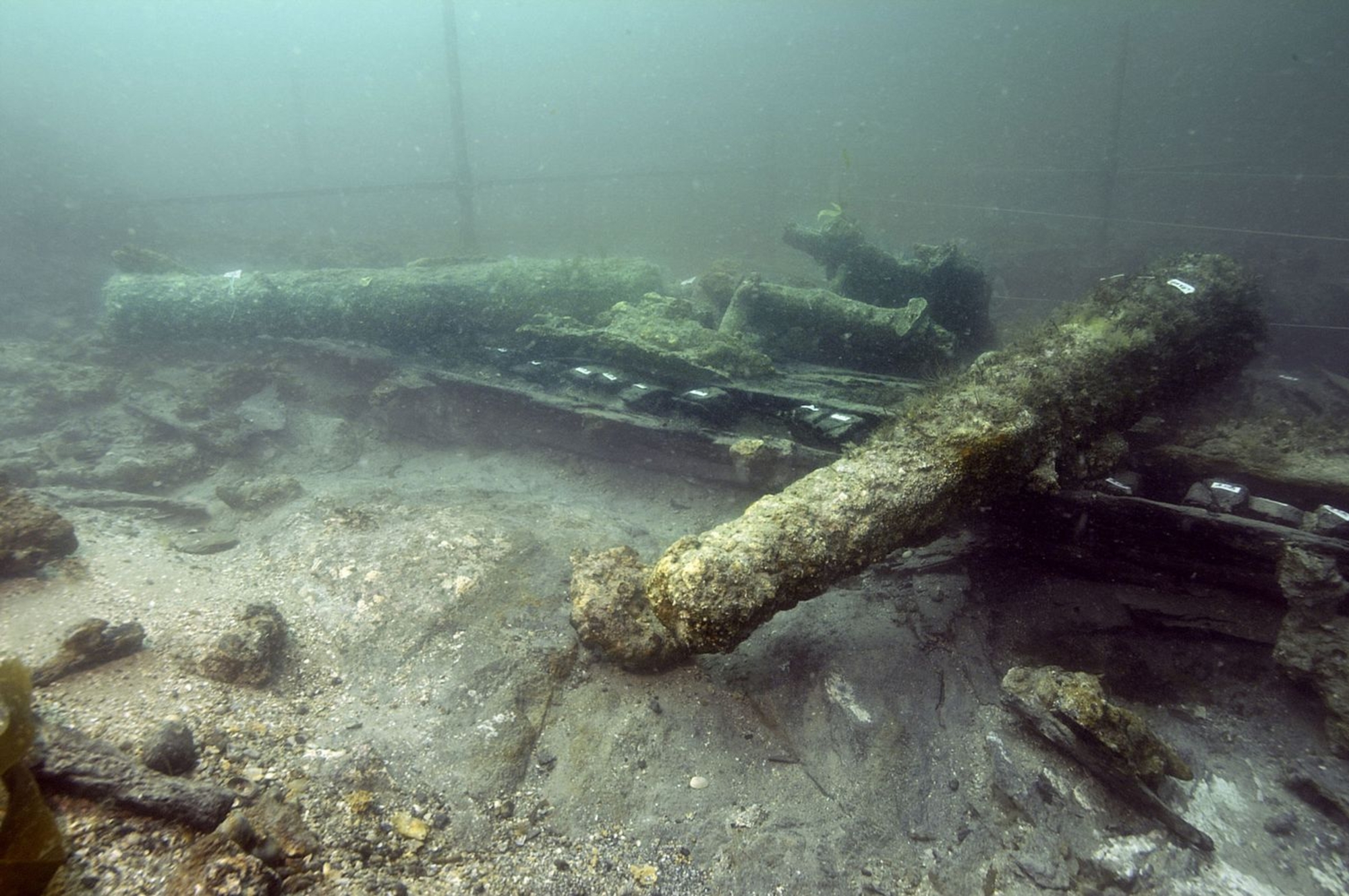
- Home
- Life aboard ship
- The roar of the cannons
It was the sight of guns jutting up from the ocean floor that led to the discovery of the Natière shipwrecks in 1995. This is only justice, as artillery was a key element on both ships. The Dauphine counted thirty cast-iron cannons and four wrought-iron swivel gun were found on the Aimable Grenot.
We know that the Aimable Grenot had 40 and 28 cannons in 1747 and 1748, respectively, but it must have lost some of its privateer artillery following the signature of the Treaty of Aix-la-Chapelle in October 1748, which brought the War of the Austrian Succession to a close. We may also assume that some of her guns were recovered after it foundered.
In the vicinity of the guns, which falled straight down from their positions in the battery, the excavation uncovered all of the equipment needed to operate them: gun-carriages, round shot, bar shot, rammers and sponges, wedges, linstocks, powder spoons, thumbstalls, cartridge boxes and so on. Studying these objects allows us to better understand and compare the cannon services on a royal frigate from 1704 and a merchant frigate from 1748.
Aboard the Dauphine, analysis of the respective positions of the various service elements and the weapons in the hold allows us to distinguish between the guns used as ballast and those placed in the battery. It also contributes to our understanding of the exact placement of the various cannons at the ports. The master-at-arms' quarters and the magazine were located to the aft on both ships.






